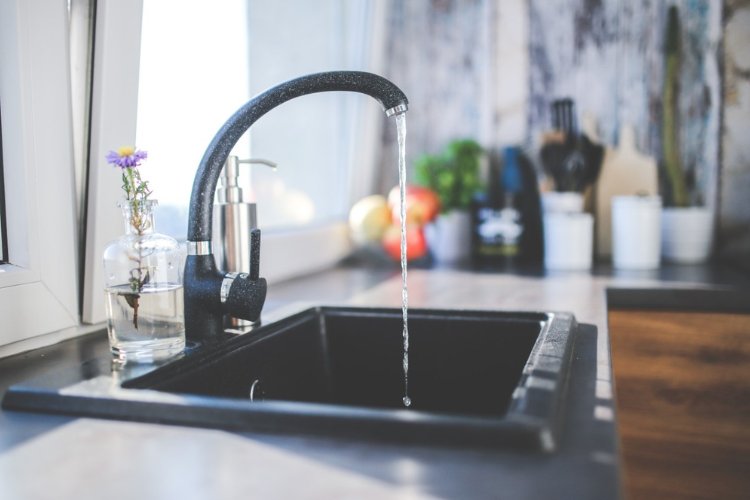
Aerators
Try an easy retrofit at home by installing an aerator on your existing sink faucet. It simply screws on the end of the faucet. The aerator restricts water flow by mixing air into the water stream, maintaining a steady pressure. If an aerator is already installed, it will have its rated flow imprinted on the side. Replace if the rating is greater than 2.2gpm.
Low Flush Fixtures
Install low-flow flush fixtures. Look for the WaterSense label on toilets and urinals. The Energy Policy Act of 1992 declared all new toilets (water closets) should use no more than 1.6 gallons per flush (gpf). The industry has advanced since then, offering ultra-low flow toilets that use only 1.1 gpf. Urinals are also available in more efficient models. A dual-flush valve effectively lowers water use by allowing the user to select a low-flush for liquid waste or bigger flush for more waste. These simple water conservation strategies typically add little to no extra cost and reap quick paybacks.
Low-flow showerheads and faucets with the WaterSense label also dramatically reduce water use. At 0.5-1.0 gallons per minute (gpm), low-flow faucets can use up to 80% less water than typical faucet, which pours out water at a rate of 2.5gpm. Hands-free motion sensors contain an adjustable timer to limit usage and control water flow on a sink faucet. In a commercial building, hands-free sensors reduce water use and limit the spread of germs.
Tankless Water Heater
A Tankless water heater located outside or in the attic, has the capacity to provide hot water for an entire house or small building. This does not mean instant hot water at the faucet, as the water must travel from the heater to where it is needed. These tankless models sense water flow and turn up the heat in stages. The typical tank model continuously beats a stored volume of water, which requires a continuous draw of energy and adds to the A/C load.
Water Heat Pumps
The average American household spends approximately 14 - 25% of its energy costs on heating water with a standard gas of electric water heater, according to the US Department of Energy. By installing a heat pump onto a new or existing water heater you will reduce this percentage costs by nearly half.
